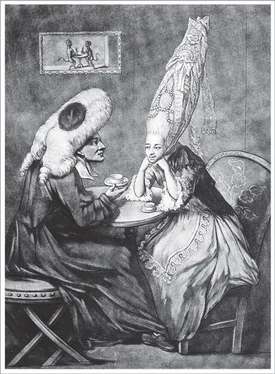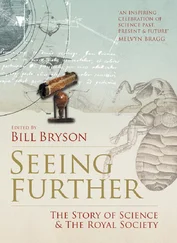Bill Bryson - At Home
Здесь есть возможность читать онлайн «Bill Bryson - At Home» весь текст электронной книги совершенно бесплатно (целиком полную версию без сокращений). В некоторых случаях можно слушать аудио, скачать через торрент в формате fb2 и присутствует краткое содержание. Жанр: Старинная литература, на английском языке. Описание произведения, (предисловие) а так же отзывы посетителей доступны на портале библиотеки ЛибКат.
- Название:At Home
- Автор:
- Жанр:
- Год:неизвестен
- ISBN:нет данных
- Рейтинг книги:4 / 5. Голосов: 1
-
Избранное:Добавить в избранное
- Отзывы:
-
Ваша оценка:
- 80
- 1
- 2
- 3
- 4
- 5
At Home: краткое содержание, описание и аннотация
Предлагаем к чтению аннотацию, описание, краткое содержание или предисловие (зависит от того, что написал сам автор книги «At Home»). Если вы не нашли необходимую информацию о книге — напишите в комментариях, мы постараемся отыскать её.
At Home — читать онлайн бесплатно полную книгу (весь текст) целиком
Ниже представлен текст книги, разбитый по страницам. Система сохранения места последней прочитанной страницы, позволяет с удобством читать онлайн бесплатно книгу «At Home», без необходимости каждый раз заново искать на чём Вы остановились. Поставьте закладку, и сможете в любой момент перейти на страницу, на которой закончили чтение.
Интервал:
Закладка:
Cholera wasn’t terribly feared at first, for the decidedly unworthy reason that it was thought primarily to affect poor people. It was accepted wisdom almost everywhere in the nineteenth century that the poor were poor because they were born to be. Although a few impoverished people might generously be described as undeserving, most were by nature “improvident, reckless and intemperate, and with habitual avidity for sensual gratification,” as one government report crisply summarized it. Even Friedrich Engels, a far more sympathetic observer than most, could write in The Condition of the Working Class in England: “The facile character of the Irishman, his crudity, which places him but little above the savage, his contempt for all humane enjoyments, in which his very crudeness makes him incapable of sharing, his filth and poverty, all favour drunkenness.”
So when in 1832 people in the crowded inner cities began to drop in large numbers from a brand-new disease from India called cholera, it was generally viewed as just one of those unfortunate things that befell the poor from time to time. Cholera became known as “the poor man’s plague.” In New York City, more than 40 percent of the victims were poor Irish immigrants. Blacks were disproportionately affected, too. The state medical commission in New York actually declared that the disease was confined to the dissolute poor and “arises entirely from their habits of life.”
But then cholera began to strike down people in well-to-do neighborhoods, too, and very quickly the terror became general. People had not been so unnerved by a disease since the Black Death. The distinguishing feature of cholera was its quickness. The symptoms—violent diarrhea and vomiting, agonizing cramps, crushing headache—came on in an instant. The mortality rate was 50 percent, and sometimes higher, but it was the swiftness of it—the fearful, headlong transition from complete wellness to sudden agony, delirium, and death—that people found terrifying. To see a loved one well at breakfast and dead by suppertime was a horrifying experience.
Other diseases actually wrecked more lives. Those who survived cholera generally recovered completely, unlike scarlet fever victims (who were often left deaf or brain-damaged) or smallpox sufferers (who could be horribly disfigured). Yet it was cholera that became a national obsession. Between 1845 and 1856, over seven hundred books on cholera were published in English. What particularly troubled people was that they didn’t know what caused it or how to escape it. “What is cholera?” The Lancet wrote in 1853. “Is it a fungus, an insect, a miasma, an electrical disturbance, a deficiency of ozone, a morbid off-scouring of the intestinal canal? We know nothing.”
The most common belief was that cholera and other terrible diseases arose from impure air. Anything that was wasted or foul—sewage, corpses in graveyards, decomposing vegetation, human exhalations—was thought to be disease-producing and potentially lethal. “Malarious aromata rampage invisible through every street,” wrote one chronicler, a touch colorfully, at midcentury. “Atmospheric poison and pungent factor and gaseous filth cry aloud and spare not, and the wayfaring man inhales at every breath a pair of lungs full of vaporized decomposing gutter mud and rottenness.” Liverpool’s chief medical officer in 1844 calculated with confident precision the actual extent of the damage, reporting to Parliament: “By the mere action of the lungs of the inhabitants of Liverpool a stratum of air sufficient to cover the entire surface of the town to a depth of three feet is daily rendered unfit for the purposes of respiration.”
The most devoted and influential believer in miasma theory was Edwin Chadwick, a secretary of the Poor Law Commission and author of A Report on the Sanitary Condition of the Labouring Population of Great Britain , which became a somewhat improbable best seller in 1842. Chadwick’s fundamental belief was that if you got rid of smells, you got rid of disease. “All smell is disease,” he explained to a parliamentary inquiry. His wish was to clean up poor neighborhoods and the habitations within them, not to make conditions more agreeable for the inhabitants, but simply to get rid of the smells.
Chadwick was an intense and cheerless figure, much given to petty jealousies and arguments over position. A lawyer by training, he spent most of his life working on various royal commissions: on making improvements to the poor laws; on conditions in factories; on levels of sanitation in cities; on preventing avoidable deaths; on reorganizing the registration of births, deaths, and marriages. Almost no one liked him. His work on the poor law of 1834, which introduced a national system of workhouses that were almost penal in their nature, made him widely despised among working people—“the most unpopular single individual in the whole United Kingdom,” according to one biographer. Even his family seems not to have had any great affection for him. Chadwick’s mother had died when he was small, and his father remarried and started a second family in the west of England. Eventually, this second family emigrated to Brooklyn and relations between the American branch and Edwin Chadwick appear to have ceased.
One of the children of the second marriage was Henry Chadwick, whose career path went in a different direction altogether. He became a sportswriter and an energetic early promoter of organized baseball. Indeed, Henry Chadwick is sometimes described as the father of the modern game. He devised the scorecard, box score, batting average, earned run average, and many of the other statistical intricacies on which baseball enthusiasts dote. The reason that a baseball box score and cricket summary are so strikingly similar is that he modeled the former on the latter. It was Henry Chadwick who decided, oddly and endearingly, that the symbol for a strikeout should be a K because it is the last letter of the word struck . (He had already used S ’s for so many actions on the field that he felt he needed to enlist another letter for striking out.)*
The miasma theory had just one serious flaw: it was entirely without foundation. Unfortunately only one man saw this, and he couldn’t get others to see it with him. His name was John Snow.
Snow was born in York in 1813 in modest circumstances—his father was a common laborer—and however much that might have colored his life socially, it served him well in terms of insightfulness and compassion, for almost uniquely among medical authorities he did not blame the poor for their own diseases, but saw that their conditions of living left them vulnerable to influences beyond their control. No one had ever brought that kind of open-mindedness to the study of epidemiology before.
Snow studied medicine in Newcastle, but settled in London. There he became one of the leading anesthesiologists of his day, at a time when anesthesia was still an unnervingly unproven field. Rarely has the word practice been more apposite with respect to a doctor’s endeavors. Even now anesthesia is a delicate business, but in the early days when dosages were based on little more than hunches and hopeful assumptions, coma, death, and other dire consequences were all too common. In 1853, Snow was called in to administer chloroform to Queen Victoria as she underwent labor in her eighth pregnancy. The use of chloroform was highly unexpected because it was not only new—it had been discovered, by a doctor in Edinburgh, just six years before—but also decidedly dangerous. Many people had died under its application already. To use it merely to help the queen cope with the pain of childbirth would be, in the view of most medical men, wildly incautious. The Lancet reported the matter as a worrying rumor and professed itself astonished that any qualified medical man would take such risks with the royal personage in any circumstance less than a crisis. Yet Snow seems to have had no hesitation in applying chloroform then or later, even though he was vividly and continually reminded of the risks of anesthetics in his practice. In April 1857, for instance, he killed a patient by experimenting on him with a new type of anesthetic, amylene, and misguessing what was the tolerable dosage. Exactly one week later he was applying chloroform to the queen again.
Читать дальшеИнтервал:
Закладка:
Похожие книги на «At Home»
Представляем Вашему вниманию похожие книги на «At Home» списком для выбора. Мы отобрали схожую по названию и смыслу литературу в надежде предоставить читателям больше вариантов отыскать новые, интересные, ещё непрочитанные произведения.
Обсуждение, отзывы о книге «At Home» и просто собственные мнения читателей. Оставьте ваши комментарии, напишите, что Вы думаете о произведении, его смысле или главных героях. Укажите что конкретно понравилось, а что нет, и почему Вы так считаете.












